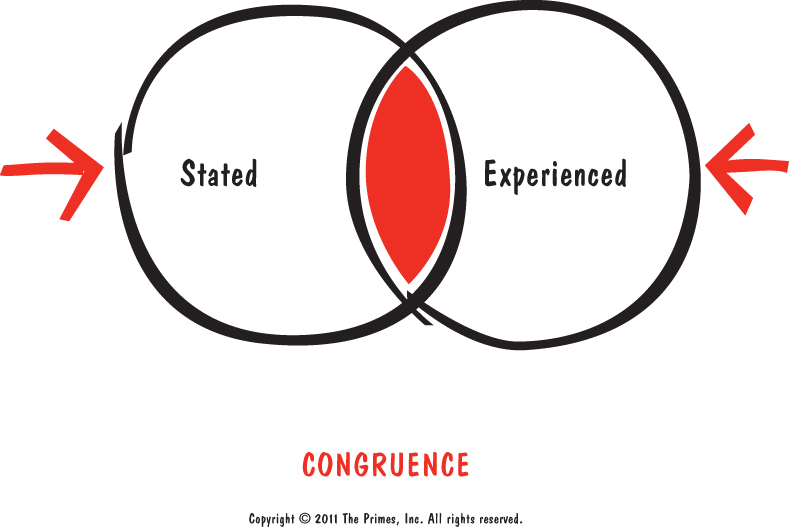
What is the dark side of a stated culture?
You now understand what CULTURE is and how to be intentional about the CULTURE in which you want to live. You realize that creating your intended CULTURE has benefits, including being easily reinforced at all levels of the organization. However, you are also aware that by stating your intended CULTURE, you run the risk of behaving in a way that is not congruent with what you've stated.
This risk is mitigated through the CONGRUENCE PRIME, which reveals the constant tension between what is “stated” and what is “experienced.” In the illustration, the red arrows represent the continuous investment of energy that is required to ensure that the “stated” culture is the “experienced” culture.
Efforts to maintain CONGRUENCE must be authentic. On July 1, 2000, Ken Lay, Enron's Chairman and CEO, published the company's 62-page Code of Ethics and required everyone to sign it. The foreword to the document says:
As officers and employees of Enron Corp.,…we are responsible for conducting the business affairs of the company in accordance with all applicable laws and in a moral and honest manner.… We want to be proud of Enron and to know that it enjoys a reputation for fairness and honesty and that it is respected. Gaining such respect is one aim of our advertising and public relations activities, but no matter how effective they may be, ...
Get The Primes: How any Group can Solve any Problem now with the O’Reilly learning platform.
O’Reilly members experience books, live events, courses curated by job role, and more from O’Reilly and nearly 200 top publishers.

